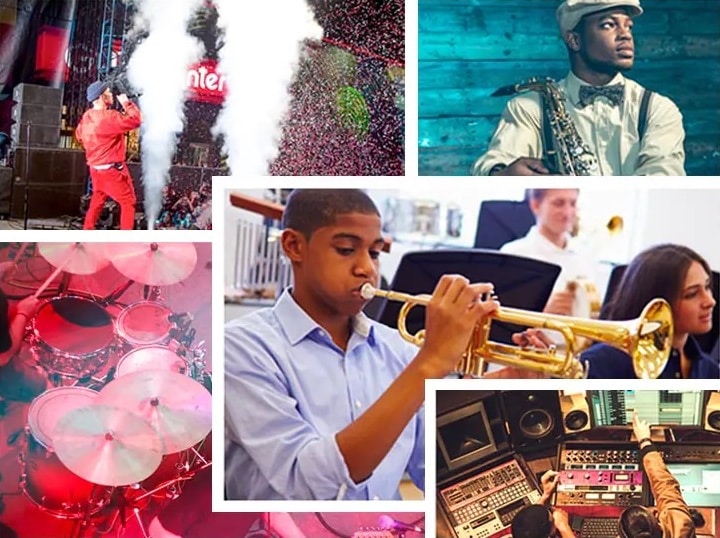If you are an absolute beginner on guitar there are a few steps you can take to help with your overall success rate! After all, playing music is not easy and requires some hills and hurdles to overcome so it’s best to take a proper approach. Here are some of the first things you need to do when learning to play the guitar!
Read and Listen
Many people consider music of the past to be of greater quality, of course, this is subjective and based on your judgement. However there are some factors that back this statement up, the biggest is the fact that music education has essentially disappeared from schools. So it stands to reason that modern music students are immediately at a disadvantage. You can fix this problem by immersing yourself in reading about and listening to various music styles.
Back in the day artists didn’t have many books, guides, and especially no Internet or social media. Guitarists learned a new song by playing a record over and over, and over until they could play it themselves. This is called ear training and the best way to learn music is by completely immersing yourself and only having your success and failure to build from.
Guitar Anatomy and The Fretboard
Ear training is important, and you are lucky enough to have all this modern technology to help build it. Before you even buy a guitar you should be very familiar with the parts and notes. A cheap guitar does not have proper intonation, so no matter how good you play, it will never sound right. You need to make sure you have a suitable guitar that has great action, intonation and feels comfortable to play.
The next most important part of the anatomy is the notes on a standard-tuned guitar, get to know these notes by always having a chromatic guitar tuner available. As you fret make sure the note sounds clean and proper and adjust your finger position to fix any issues. The guitar fretboard isn’t laid out nicely like a piano keyboard, it has note overlaps so it helps to familiarize yourself with the notes from day one.
Open and Barre Chords
The guitar is a chordophone which means it is meant to play chords! Even if you want to shred mad solos at supersonic speeds, you still need to know your chords! So start with easy open guitar chords like G-C-D, or A-D-E, or C-G-F. These chords are grouped in keys so they will sound good if you play them in these orders. Open chords are the easiest as you only press down on some strings.
Barre chords require more finger strength and can be a real pain, but don’t put them off. Learning to play chords correctly and fast is one of the hardest beginner aspects of the guitar. There is no secret or cheat that will solve the problem, just time and practice. You will get to the point where you will want to quit, but don’t! Just keep pushing, maybe try partial chords at first and build your strength. Either way, you must keep practicing to succeed.
Try Different Strums
Pick the easiest groupings of the chords above and play them in order, but with different strumming styles. Turn a metronome on slow and play a downstroke on each beat of G, and then C for the next measure, then D, and then back to G. Next try an alternate strum, like down and up, stick to simple slow quarter notes at first, don’t rush! Try this down and up strum on all the strings and then on single strings, just make sure you get a clean sound.
It may help to turn a backing drum track on besides just using a metronome. This will give you the ability to jam and improvise with your new easy chords and strums. It won’t be fancy, but it will help with your comfort level of playing on your own. Eventually, you can start adding in faster 1/8th or 1/16th notes to your strum, do what sounds good. When something sounds bad, change it! When it works, keep doing it!
Mix Some Scales In
Once you can play one of the chord sets above at a decent speed you can start adding single notes in. This can be bass notes like a country tune or perhaps a solo for a guitarist that wants to shred. Pick a scale that goes with your key, for example, G-C-D will work with the G major scale, you can add notes in from that into your chord changes. If you’re not sure what scales and chords go together it is always easy to check.
Also pick random new scales that you may not even understand yet, just pay attention to the note intervals and keys. Notice where they are on the fretboard and how each scale has a unique vibe. Music education is a big-picture kind of thing, you may not understand every aspect immediately but with time and practice the pieces will fall into place and you will have many epiphanies!
Learn Every Song You Can
As a beginner guitarist, it is important to know how to fret notes and make quick chord changes. The best way to practice this is to learn every single song you can! Sit down and look up your favorite music, if it is easy, practice the song, if it is too hard, save it for later. The songs that are perfect for your level, save them aside as your main practice. And most of all make sure to practice these songs while listening to them. Mix old-fashioned ear training with modern tabs and sheet music to get the best of both worlds!
This is how most guitarists learned to play, they simply sat down and played as many songs as possible. Eventually, you will start to see patterns like repeated scales, chords, and progressions that make up all Western music. Soon enough you will be able to pick songs out by ear just based on a chord progression.
Keep Practicing and Playing
You may find all or some of these steps to be useful, the important part is to keep at what works for you. There are so many exercises and lessons available out there to choose from, you should never get bored from trying new things. Even online guitar lessons are a great way to go in the modern age. Each guitarist has their own unique set of methods, the key is to practice all the time. That is the one feature that all successful guitar players share, they have put so much time into the skill!
That is the ultimate lesson to take from this or any beginner guitar instruction, practice all the time! Of course, you don’t want to give yourself an injury or burnout, but you want to get awful close. We all went through a phase where chords were impossible, solos too complicated, and the musicality just out of reach. And yet we all got through the same way, by sticking to it!
Even once you are past the beginning stages of guitar these steps will continue to help advance your musical knowledge and instruction. Even an advanced guitarist practices all the time and is always on the lookout for new chords, scales, progressions, and techniques. There is no finish line with music as there is always some new song or skill to learn. And the most important thing to remember is to study songs, have specific goals, and practice as much as possible to achieve them!



